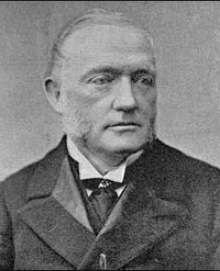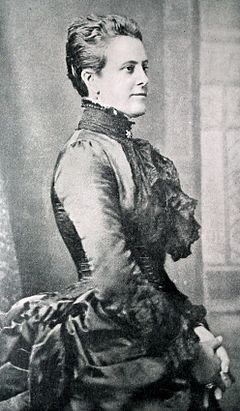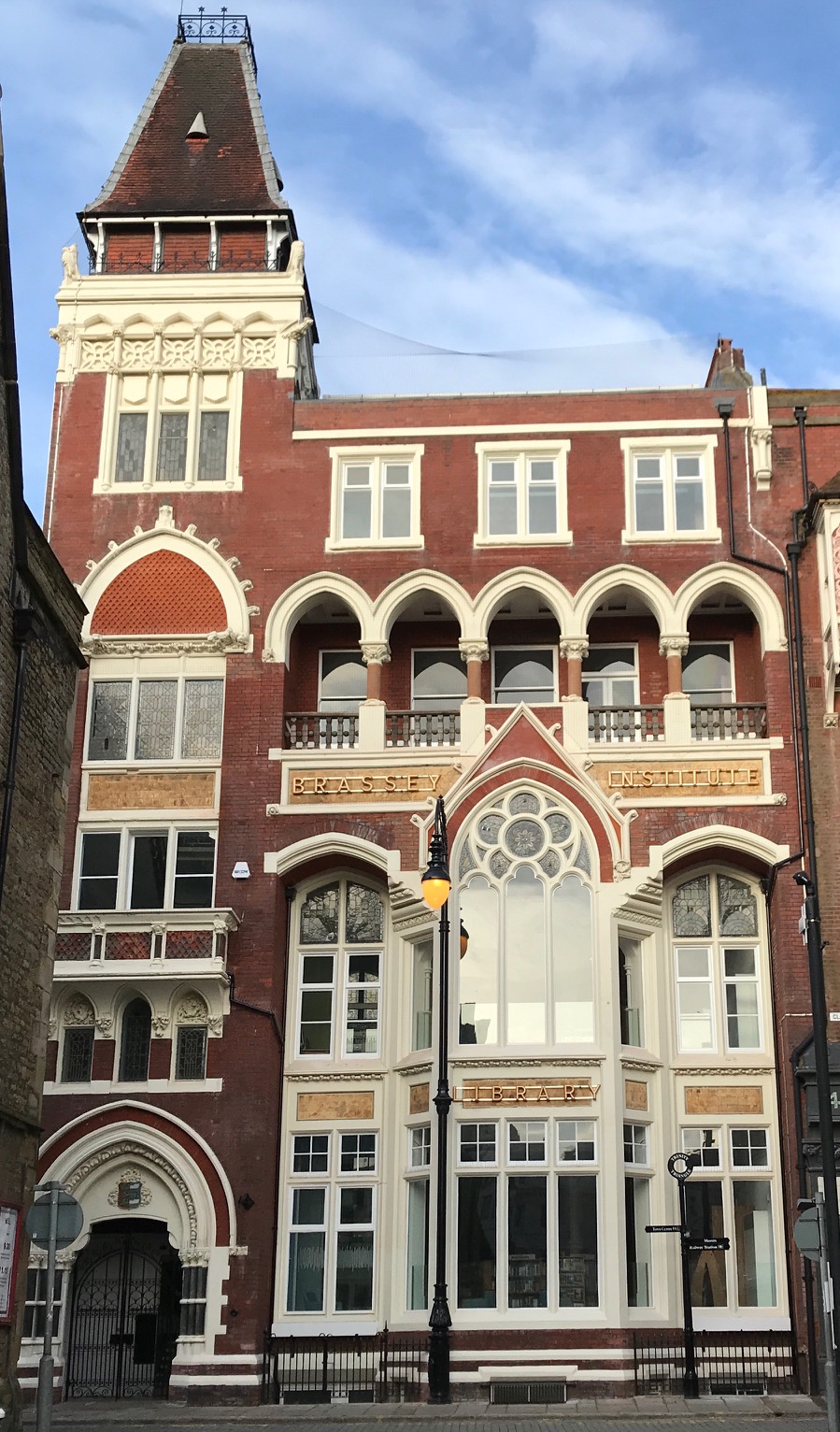Politician, adventurer and philanthropist the man behind the Brassey Institute

His name is one you hear in the town on a regular basis, the town’s main library is based in the institute that bears his name and the artefacts that he donated to the care of the town have just won the Museum and Art Gallery an important national accolade… but who was Sir Thomas Brassey?
Born on February 11th 1836 in Stafford, he went on to become Hastings’ Member of Parliament, was also Governor of the Australian state of Victoria and could reasonably be described as an adventurer as well as a philanthropist.
Without doubt Brassey was born into privilege. He had a passion for the sea and sailed quite literally around the world in yachts he owned which were designed by a friend and built in yards owned by his father’s business. One of his trips is thought to have been the first circumnavigation of the world by a private yacht and all this at a time when foreign travel was almost unheard of.
His most famous yacht was the Sunbeam in which he sailed the world. His fist wife Annie wrote lively, popular accounts of their travels together but she died aboard the yacht on September 14th 1887, seven days out of Port Darwin, she was only 47. In his book The Last Voyage, Brassey recalled that his wife had suffered from an inherited ‘weakness of the chest’ and had a form of chronic bronchitis. They sailed from Darwin hoping the trip would improve her health, however, on the way to Mauritius she died of malaria and was buried at sea.
Sir Thomas was eldest son of Thomas Brassey, a railway contractor, and his wife Maria. He was educated at Rugby School and studied law at University College, Oxford. He was called to the Bar in 1866.
He first tried to become an MP in 1861 and briefly held the Devonport seat. He stood for, and won, the Hastings seat in 1868 as a Gladstonian Liberal. He went on to win successive elections and was the town’s MP until he was defeated at the general election of 1886. He was civil lord of the Admiralty in 1880-84 and its parliamentary secretary in 1884-85.
Love of the sea
His love of the sea dated from boyhood and as often as he could he would go cruising in his yacht. He was an enthusiastic publicist of naval and maritime affairs and labour conditions. They were subjects he spoke about often in the House of Commons and he gave lectures, wrote letters to the press and wrote pamphlets and books on his pet subjects. His most notable works include Work and Wages (1872), The British Navy (1882-83) and the periodical Brassey’s Naval Annual (from 1886).
For his work in establishing volunteer naval reserves he was appointed Knight Commander (KCB) in 1881 and became a peer in 1886 as Baron Brassey of Bulkeley.
He had married Annie Allnutt In 1860 and after her death he married for a second time in September 1890, his second wife was Sybil de Vere Capell the youngest daughter of Viscount Malden.
Brassey was lord-in-waiting to Queen Victoria in 1893-95 and president of the Institute of Naval Architects in 1893-96.
Queen Victoria gave Brassey one of his more unusual appointments in 1893 when she appointed nine members to the Royal Opium Commission, which consisted of seven British and two Indian members. Chaired by Brassey the commission was asked to report on whether the India Opium export trade to far east should be ended and to consider whether poppy growing and consumption of Opium in India itself should be prohibited apart for medical reasons.

Globetrotting
Brassey’s globetrotting exploits saw him accept the position of governor of the Australian state of Victoria in 1895, arriving in Melbourne on his own yacht in October that year with his wife and daughter. During his time down under he travelled extensively within Victoria and visited other Australian colonies including Western Australia where he owned land. All of these travels were undertaken at a time when it was not easy to cover large distances easily but that never deterred Brassey from undertaking another trip.
Hastings is not the only town to have building named after Brassey, he is remembered in Australia’s national capital, Canberra through Brassey House which is now a hotel. It was completed in 1927 to coincide with the relocation of the Federal Parliament from Melbourne to Canberra. Brassey House originally offered accommodation for the exclusive use of members of parliament and mid-level government officials who were relocating to Canberra. During the mid 1960s the government of the day expanded the capacity to 131 rooms and added conference and meeting rooms. It was sold in the mid-1980s to local businessmen. It is said that Brassey House had been built back-to-front, with the more ornate façade facing away from the busier thoroughfare.
End of an era
Brassey’s governorship marked the end of an era. He left Melbourne on the Sunbeam in January 1900, before his full term was completed and, after his return to England, pursued an undistinguished career. He continued to write and speak on Imperial and naval subjects, frequently making warm references to Victoria.
Further honours were bestowed upon him: G.C.B. in 1906, lord warden of the Cinque Ports in 1908, an earldom in 1911. Characteristically he sailed the Sunbeam to Gallipoli in 1915 and then handed her over to the Indian government for use as a hospital ship. He died in England on February 23rd 1918, survived by his second wife and their daughter, three daughters of his first marriage, and briefly by his heir also called Thomas.
A love of the sea
Brassey’s first experience of sailing came while he was still a pupil at Rugby school where he started to compete successfully in club events in a yacht called Cymba. By 1859 he bought his first yacht a 120 tons iron craft called Albatross that had been designed by his friend St Clare John Byrne. Around this time he was elected as a member of the Royal Yacht Squadron.
Between July 1876 and May 1877 Brassey circumnavigated the world in his steam-assisted three-masted topsail-yard schooner Sunbeam, another craft designed for him by St Clare Byrne. This voyage is said to have been the first circumnavigation by a private yacht. His first wife Annie published an account of the cruise entitled In The Trades, The Tropics, & The Roaring Forties, or alternatively A Voyage In The Sunbeam: Our Home On The Ocean For Eleven Months.
At the age of 79 Brassey sailed Sunbeam to Mudros Bay in order to support the troops as a hospital ship during the ill-fated Gallipoli campaign.
Annie Brassey
 Brassey’s first wife Annie is famous in her own right and there is a major project underway at the moment to look again at her works as a photographer, a writer and a prolific collector.
Brassey’s first wife Annie is famous in her own right and there is a major project underway at the moment to look again at her works as a photographer, a writer and a prolific collector.
Hastings Museum and Art Gallery is partnering with the University of Sussex for an Arts and Humanities Research Council project to map the collections and photography of Lady Brassey.
The role and work of female photographers in the history of early photography has been largely overlooked and this project will give a broader understanding of women photographers in Victorian Britain. Annie’s albums will help to map the Brassey collections in Hastings and Bexhill.
Brassey Institute
 The Brassey Institute at 13 Claremont is the town’s public library.
The Brassey Institute at 13 Claremont is the town’s public library.
It’s construction was funded by Brassey who gifted ownership of the whole building to Hastings Council in 1887.
The Institute is an example of decorative Venetian Gothic architecture and the architect behind the project was Walter Liberty Vernon .
The building originally housed a reference library on the ground floor, an assembly room on first floor and a school of art and science on the upper floors. Accommodation for the Hastings Rowing Club was provided in the basement and there was also a suite of rooms reserved for Brassey and his family.
Lord Brassey opened the building as a free public library in 1881.
The Brassey Institute was awarded Grade II listed building status in 1987 and underwent a multi-million pound restoration before being re-opened to the public last Spring.
Harold and Edith
 The statue of King Harold and his wife Edith Swanneck that is located in West Marina Gardens was commissioned in the early 1870s by Brassey.
The statue of King Harold and his wife Edith Swanneck that is located in West Marina Gardens was commissioned in the early 1870s by Brassey.
He had met Prussian sculptor Charles Augustus William Wilke – a man whose work regularly appeared at the Royal Academy and Wilke completed the work which at the time included an inscription carved into the marble that read: “Edith finding the body of Harold on the battlefield of Hastings.” the inscription has long since disappeared, worn away by the elements.
Local historian Ian Jarman is currently running a campaign to have the statue given a light restoration, some signage erected to explain what it is and a structure put up that would protect the statue from the elements.




Great article about a name you hear so much about but don’t realise who he was or what he achieved.
His father was an incredibly accomplished railway builder and engineer of global renown hence the wealth in this family. He died in the Royal Victoria Hotel on the sea front St Leonards buried in Catsfield. Don’t know where Thomas is buried?
What a sailing ship that was the Sunbeam. What taste and beauty.
Lovely to read the background history to what was such an influential figure!
Fascinating story of a life well lived.
Much enjoyed!